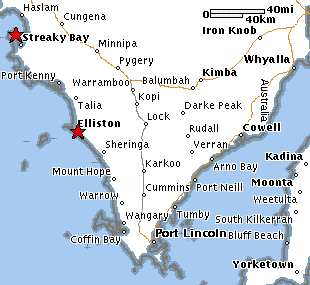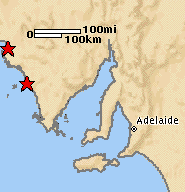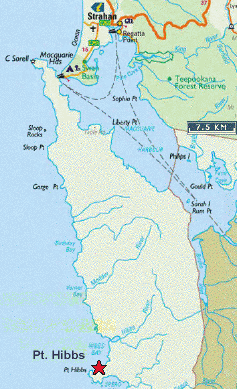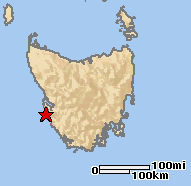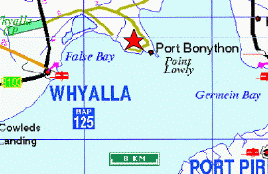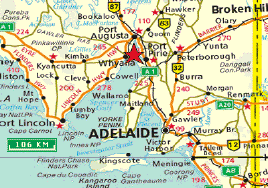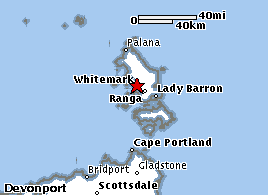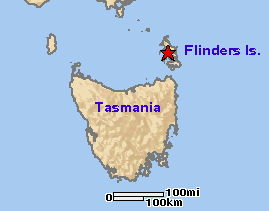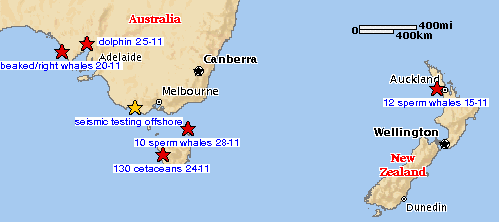Seismic test plans anger
September 10, 2003 - ANGRY south-west fishing industry representatives last night challenged gas exploration experts at a heated meeting in Port Campbell to prove seismic testing would not jeopardise marine life.
More than 35 people from a variety of interest groups attended the forum organised by Woodside Energy in a bid to allay fears and inform residents of its plans to hunt for gas deposits along the south-west coastline.
The forum was told air guns would be discharged under water as close as 900 metres to shore every eight seconds, creating a noise slightly softer than lightning striking the sea surface. But the project's environmental adviser Peter Farrell was quick to stress seismic testing would not kill marine life, threaten whales and abalone divers in the area or cause damage to the sea bed.
"We are not making explosions here and we are not sneaking up behind the fish...there will be plenty of warning and as instinct they will get out of the way," he said.
Concerned fisherman Chris Loving attacked the lack of consultation Woodside had given local fishermen over the issue and raised concerns for diver safety. "So if a diver is in the area is he going to get his head blown off by one of these things?" he said. Woodside operations co-ordinator Mark Taylor said divers would be notified of a 1500-metre exclusion zone during seismic activity.
Experts also said if whales were spotted three kilometres from the seismic testing vessel, air guns would not be fired until the mammals were out of sight. Mr Taylor said the company had no plans to undertake testing near the Logans Beach whale nursery and any future exploration wells were likely to be dug onshore.
Fishermen claimed they had been misled by Woodside into thinking the company already had a permit for the seismic testing. They also attacked 30-year-old research on the effect seismic testing had on fish types.
Port Campbell Professional Fishermen's Assocation spokesperson Antionette Hanna has requested a copy of Woodside's environmental management plan in an attempt to analyse the testing further.
Greens Party representative Gillian Blair claimed residents who put their head under the water in Warnambool's Lady Bay would feel the seismic activity from as far away as the Bay of Islands. Woodside hopes to start testing in October.
http://the.standard.net.au/
Copyright © 2003 Warrnambool Standard
Concern over search for treasures under the sea
September 27, 2003 - Experts fear use of seismic surveys in the hunt for gas along Victoria's scenic south-west coast could devastate marine life, writes Melissa Fyfe.
What do you think of when looking at the 12 Apostles? Their eerie beauty is probably the first thing that springs to mind.
If you are an environmentalist, you may be thinking of what lies beneath the rocky pillars: the 12 Apostles Marine National Park, a hard-fought-for sanctuary for all sorts of creatures in an undersea landscape just as dramatic as the Apostles themselves.
But if you were a multi-national energy company you might be thinking of money - oceans of the stuff. From the 12 Apostles down the coast to Warrnambool the hunt is on to find and tap gas along the shallow reef system.
To the outrage of environmentalists and Port Campbell abalone and lobster fishermen, two companies - Woodside and Benaris Energy - have applied to the State Government to do seismic surveys along this stretch of coast. Benaris Energy's application covers most of the 12 Apostles Marine National Park.
Energy companies use seismic surveys instead of more expensive drilling to map what resource may be trapped under the seabed.
This is done from a boat with airguns trailing behind. The energy from these guns - which make frequent intense noise of more than 200 decibels - penetrates the seabed.
How does marine life cope with the noise? The only thing environmentalists and the industry agree on is that many organisms can die if they are within five metres of the sound source. Other than that, experts admit we don't really know the effect on underwater life, and no studies have been done on the impact of seismic surveys in shallow water.
Australia's leading expert, Curtin University of Technology's marine bio-acoustician Dr Rob McCauley, said environmentalists and fishermen had a real cause for concern. "There's unknowns . . . without proper assessment, we don't know what the real risk is," he said.
The little research available is often funded by the petroleum, oil and gas industry. Dr McCauley's studies are also part-funded by industry, but he is unfussed by this. "Industry funding the work is the only way that it is going to happen," he says. "They put no caveats on what we do or say."
In fact, Dr McCauley's research, released earlier this year, was grasped by environmentalists as proof that seismic testing does harm fish. It found it caused tremendous damage to fish hearing and severe behavioural reactions. But it is all in the interpretation. The fish tested were caged and unable to escape the sound.
But Dr McCauley said that more territorial fish live on reef systems - like the survey sites - and are less likely to swim away from the noise source. He is also concerned that the significant penguin colony in the area feeds on more mobile fish and when those fish swim away, the penguins will have nothing to eat and may be unable to reproduce.
Calling for a moratorium on seismic surveys, the Victorian National Parks Association and the Australian Conservation Foundation see this as a key test for Environment Minister John Thwaites. A decision is due in the next few weeks.
http://www.theage.com.au/
Copyright © 2003. The Age Company Ltd
